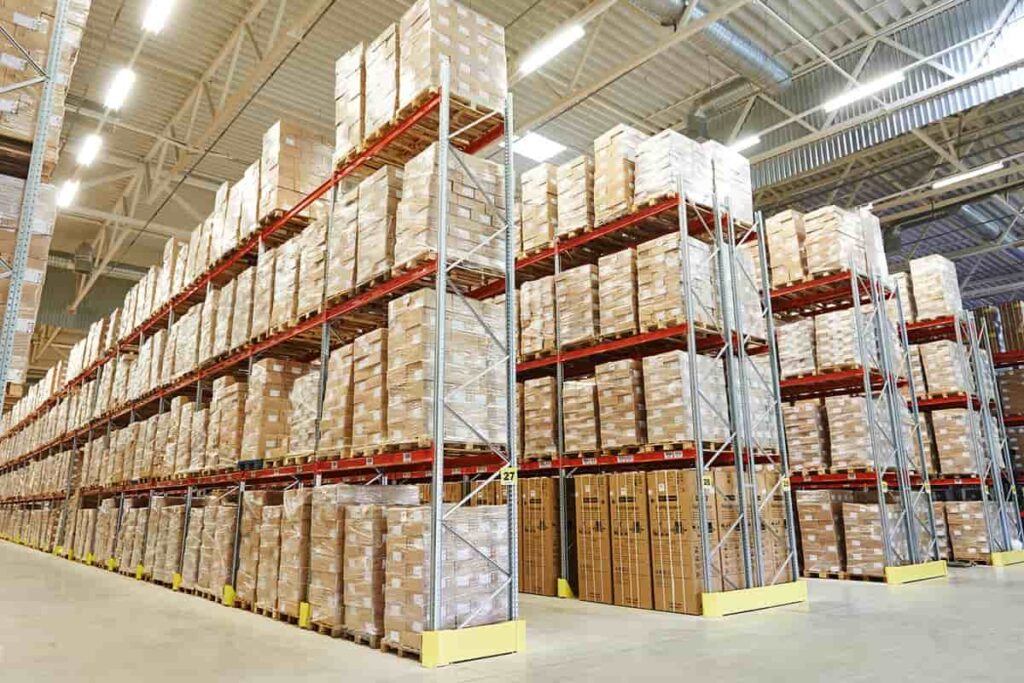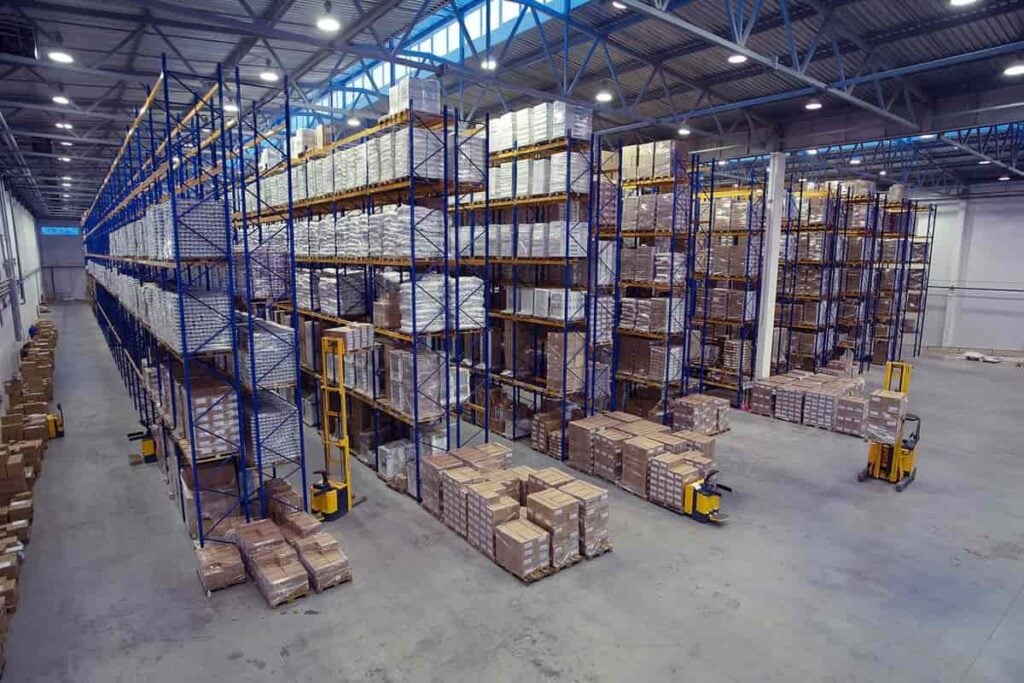Red Point’s AI Counterfeit Detection Technology
Table of contents
Table of contents

While some people might think of Barcelona as a place to stare at Gaudi architecture and watch Messi play football soccer while drinking non-alcoholic beer, it’s also home to a thriving tech scene. Just last week, Barcelona startup Red Points took in $12 million in Series B funding to bring their total funding to over $14 million. What they’re doing relates primarily to counterfeit detection of both digital and physical goods online – among other use cases. The size of the black market in counterfeiting is bigger than the global waste management industry according to the Organisation for Economic Co-operation and Development (OECD):
Imports of counterfeit and pirated goods are worth nearly half a trillion dollars a year, or around 2.5% of global imports, with US, Italian and French brands the hardest hit and many of the proceeds going to organised crime, according to a new report by the OECD and the EU’s Intellectual Property Office.
We paid Red Points a visit to have a chat about what they’ve been up to and where they’re going.
About Red Points
Founded in 2012, Catalonian startup Red Points has taken in around $14.2 million in funding to develop technology that can detect digital copyright infringements or physical goods being sold that are counterfeits of the originals. The company began to see the fruits of their labor around 2014 when they decided that technology was the way forward. Fast forward to today and they’re seeing strong revenue growth with +300 clients (30% from the USA), a unique competitive position (couldn’t find other startups this far along), and the introduction of deep learning into their product release as of last October (proper investment in technology here). So just what do they do?
The best way to describe how the Red Points’ platform works is to provide an example. Let’s say we thought Coca-Cola wasn’t a very good product and said something to the effect that “coke sucks”. If you recall from our previous article on Coca-Cola and AI, they’re actively watching what their customers are saying about them. They would likely respond back in order to find out why we said that and demonstrate that they are paying attention to what customers say. The way they do that is by actively scanning “the Internet” for keywords that may associate negative connotations to their brand. That’s called “active monitoring with keywords”, and Red Points does the same thing except that they’re looking for counterfeit assets, piracy, and other forms of intellectual property (IP) violations in both digital formats (music, films, etc). and physical formats (cosmetics, sunglasses, watches, etc.):
The “how” is further explained by another example.
Let’s say you and your friend Kong decide to create and sell fake North Face jackets. Kong goes about securing a factory to make them and you begin selling them on eBay. How can anyone ever detect your nice little racket? The first signal is the price. Red Points can very easily scan social media, ‘the Internet”, and various selling platforms to find your counterfeit North Face jackets using keywords and image recognition that looks at the pictures. Then, it’s easy enough to see dramatic price differences that would obviously be knock-offs.
Clients can choose to setup the tool in any number of configurations, for example, to monitor specific regions. North Face may be more worried about knock-offs being sold in America than China, though China is where most the counterfeit goods originate from:

Speaking of China, one of the most popular downloads at Red Points has been their “How to Sell in China” which begs the question, just how are they faring when it comes to trying to shutdown Chinese counterfeiters who may have the local courts in their back pocket? Red Points admits this is challenging, and since their main focus on the Americas and the E.U., the problem doesn’t come up much. This brings us to perhaps one of the biggest value adds Red Points offers.
Once you’ve found counterfeit items (about 90% of what is flagged is counterfeit), they then go about trying to get the objects removed, since they often obtain the rights to work on legal behalf of their clients. They don’t go to court or anything like that, but they have automated much of the complaint process such as filling out forms, filing initial cease and desist letters, or sending simple “take that stuff down or I’ll sue the isht out of you” emails. That works an astounding 96% of the time with the average product removed in just 1.5 days, but for the stubborn 4%, they have other ways of making people stop – like cutting off their access to payment platforms like Visa or Paypal.
You may think that once people begin using the tool and all the counterfeiters are shutdown, that there’s no more need for the tool, but that’s not how the criminal mind works. Most counterfeiters are extremely clever and able to come up with novel ways of flying under the radar. That’s where some deep learning can come in handy. We’ve seen numerous examples of AI being able to spot criminals in ways that humans can’t. Red Points has developed some home grown AI technology that uses history to come up with new rules. If the software detects certain patterns, it suggests rule changes. This constant ability to find new counterfeit products is why Red Points has a very low client churn rate (mid-90s-ish).
The AI being used also provides a “human-in-the-loop” feature which allows the user to evaluate pictures that may be in a grey area. That helps the algos get better at finding fake products that might not have many keywords. There is even the potential of having the AI detect physical differences between product pictures and the real items and flag them for further investigation. The ultimate goal of course, is complete automation. On-board a new client in one to two week’s time and they’re off to the races, capturing sales that would have been lost by attacking the counterfeit sellers directly.
While looking for pirated digital assets still constitutes a chunk of Red Points business, anti-counterfeiting and brand protection for physical assets being sold on line makes up the large majority of their revenues (around 75 per cent). While some law firms might mistakenly see this tool as a threat, Red Points sees the product as something law firms can use to their advantage, for example, to find leads. They’re actively targeting law firms in their marketing materials which say things like:
Legal staff can spend their time on investigation and other processes that cannot be automated and are where it brings real value to their company and clients.
Speaking of clients, Red Points wasn’t at liberty to disclose the names of their larger clients, but we can assure you that they have some pretty big household names using their tool. There are a few interesting use cases to check out as well. Not sure if you’re into Dope Shirts, but they’re a client of Red Points. They setup the tool and in three months had 11,000+ cases dealt with. Another client was actually a Kickstarter outfit called Food Huggers which solved a huge first world problem for people who have too much food and are too good for cellophane:
Food Huggers came up with a product that so cool that they actually had criminals copying the product before they even built it. (Another downside of crowdfunding.) Then Red Points came along and sorted them out and they all lived happily ever after. The Red Points tool is also being used for some pretty creative use cases, such as in the sex toys industry, where the algorithms are on the lookout for fake rubber schlongs.
Using their new round of funding, 2018 is the year that Red Points gets to the USA with their first office opening soon in New York. They continue to make heavy investments in technology (as one does with some fresh funding) and are looking at additional product applications such as controlling distribution channels. Let’s say that you sell sports goods in Madrid and North Face gives you exclusive rights to sell North Face in Spain. If you found someone else selling North Face anywhere in Spain, you’d be pissed. Now you have a way to watch your back.
There aren’t too many players in this space. We looked at Entrupy before but they’re focused on verifying the authenticity of high-end goods like Gucci and Prada when the item is physically in front of you. Of course we could just end up with unique identification embedded in textiles, if Applied DNA Sciences (NASDAQ:APDN) has anything to say about it. Fabriclink named the CertainT platform one of their “Top 10 Textile Innovations for 2016-17“:
The CertainT™ Platform provides users of the SigNature® T system for man-made fibers and synthetics, such as recycled PET, with a single streamlined platform to tag, test and trace their products from source to shop.
Looks like Applied DNA Sciences is applying DNA Science in a pretty innovative manner, though that doesn’t mean you should go out and buy their stock right away without digging in a bit. We’ll do that for you in a coming article.
Getting back to online monitoring, another firm that offers a similar service to Red Points is MarkMonitor, but Red Points see them as more of a service offering than a configurable SaaS tool. Still, MarkMonitor (also called Clarivate Analytics) counts about half the Fortune-100 as clients, so they definitely are entrenched in the brand protection space. There are a few other names out there as well. A startup called CounterFind claims to have at least 50 customers signed up for a solution they’re developing offshore with $1 million in funding so far according to an article by Crunchbase news. Los Angeles startup IP Shark offers an online brand protection platform that raised around $550,000 in funding several years back. Another startup from New York called BrandShield has raised $1.5 million to create a similar offering.
Conclusion
It’s easy to see why Red Points is focused on a U.S. presence when competitors like CounterFind say that being “based in the United States gives it an advantage over its European competitors”. Still, when you’re talking about a half a trillion dollar market, there’s room for all. With all the advanced technologies we have available now, we’d expect to see these types of services protecting every brand out there. If you’re one of those people who rolls around wearing knock-offs while looking like a total tool, then that party’s coming to an end very soon.
Sign up to our newsletter to get more of our great research delivered straight to your inbox!
Nanalyze Weekly includes useful insights written by our team of underpaid MBAs, research on new disruptive technology stocks flying under the radar, and summaries of our recent research. Always 100% free.
















